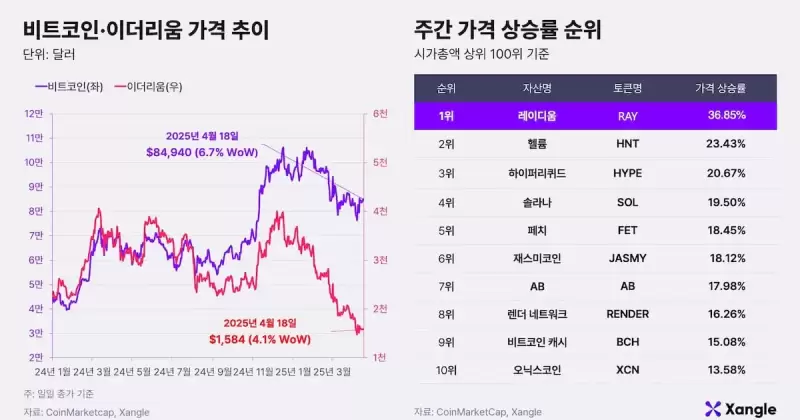 |
|
 |
|
 |
|
 |
|
 |
|
 |
|
 |
|
 |
|
 |
|
 |
|
 |
|
 |
|
 |
|
 |
|
 |
|
如果您将脚趾浸入了加密货币的世界中,您就会知道演习:价格可以狂奔

If you've dipped your toes into the world of cryptocurrency, you know the drill: prices can swing wildly, making headlines for sudden surges or stomach-churning drops (although recent events in the stock markets surrounding Trump’s tariff policy show this isn’t exclusively limited to crypto).
如果您将脚趾浸入了加密货币的世界中,您就会知道演习:价格可能会狂奔,成为突然潮流或胃部削减掉落的头条新闻(尽管特朗普关税政策围绕股票市场的最近事件显示,这不仅限于加密货币)。
But amidst this volatility, a different kind of digital asset has quietly become essential plumbing for the crypto ecosystem: the stablecoin. Pegged to familiar currencies like the US dollar, these tokens aim to be the calm in the crypto storm, offering a reliable digital stand-in for everyday money. Their usefulness for trading, payments, and even just holding value digitally has made them incredibly popular, especially across Asia – a region buzzing with crypto activity and accounting for a massive slice of global trades (Cryptocurrency in Asia: The Adequate Laws and Regulations).
但是,在这种波动性中,另一种数字资产已悄悄地成为加密生态系统的必不可少的管道:stablecoin。这些代币的目标是挂在熟悉的货币中,目的是成为加密风暴中的平静,为日常货币提供可靠的数字替身。它们对交易,付款甚至仅在数字上具有价值的有用性使它们变得非常受欢迎,尤其是在整个亚洲 - 这个地区充满了加密活动,并考虑了大量的全球贸易(亚洲加密货币:适当的法律和法规)。
But this success hasn't gone unnoticed by regulators. As billions flow through stablecoins daily, governments from Tokyo to Singapore to New Delhi are grappling with a critical question: how do you regulate these digital dollars and local currency equivalents to ensure they are genuinely stable and safe, without stifling the innovation they represent?
但是,监管机构并没有注意到这种成功。随着数十亿美元的每日流动,从东京到新加坡再到新德里的政府正在努力解决一个关键问题:您如何规范这些数字美元和当地货币等效物,以确保它们真正稳定且安全,而不会扼杀它们所代表的创新?
As of early 2025, the answer across Asia isn’t a single chorus, but a complex harmony of different tunes. Some nations are laying down clear, welcoming frameworks, hoping to attract the burgeoning digital finance industry. Others are moving more cautiously, wary of potential risks to their financial systems. This article explores this unfolding regulatory patchwork, looking at how key Asian countries are shaping the rules for stablecoins and what it means for users and the future of digital money in the region.
截至2025年初,整个亚洲的答案不是一个合唱,而是不同音乐的复杂和谐。一些国家正在建立清晰,热情的框架,希望吸引新兴的数字金融业。其他人则更加谨慎地行动,对其金融系统的潜在风险保持警惕。本文探讨了这种不断发展的监管拼布,研究了亚洲主要国家如何塑造Stablecoins的规则,以及对用户和该地区数字货币的未来意味着什么。
Why Stablecoins Need Rules: Keeping Things Safe and Sound
为什么稳定币需要规则:确保事物安全和健全
Why are governments suddenly so interested in rules for stablecoins? There are a few key reasons:
为什么政府突然对Stablecoins的规则如此感兴趣?有几个关键原因:
The Asian Landscape: A Patchwork of Approaches
亚洲景观:方法
Unlike regions like Europe, which is moving towards a single set of rules (known as MiCA), Asia doesn’t have one unified approach. Instead, each country is developing regulations based on its own economic goals, technological readiness, and concerns about financial risk. Let’s look at some key players:
与像欧洲这样的地区(朝着一组规则(称为云母))迈进的地区不同,亚洲没有一种统一的方法。相反,每个国家都根据自己的经济目标,技术准备和对财务风险的担忧制定法规。让我们看一些主要参与者:
Singapore: The Structured Innovator
新加坡:结构化创新者
Singapore has actively worked to become a leading hub for financial technology, including crypto. The Monetary Authority of Singapore (MAS), the country’s main financial regulator, has been proactive in setting clear guidelines.
新加坡已积极地成为包括加密在内的金融技术的领先枢纽。该国主要的金融监管机构新加坡货币管理局已积极制定明确的准则。
Stablecoins fall under Singapore’s Payment Services Act, which was recently updated with changes taking effect right around now, in early April 2025. These rules treat stablecoin issuers and service providers (like digital wallets holding stablecoins) as “digital payment token” (DPT) providers.
Stablecoins属于新加坡的《支付服务法》,该法案最近在2025年4月上旬更新了变化。这些规则将对Stablecoin发行人和服务提供商(例如持有StableCoins的数字钱包)作为“数字支付代币”(DPT)提供商。
Key aspects of Singapore’s approach include:
新加坡方法的关键方面包括:
Singapore’s goal is clear: encourage innovation in the digital asset space while ensuring stability and robust consumer protection.
新加坡的目标是明确的:鼓励在数字资产领域进行创新,同时确保稳定和强大的消费者保护。
Japan: Pioneering Specific Stablecoin Laws
日本:开拓特定的稳定法律
Japan was one of the first countries globally to recognize Bitcoin as a legal payment method back in 2017 and has continued to refine its crypto regulations. Notably, Japan took an early lead in specifically regulating stablecoins.
日本是全球最早在2017年将比特币视为合法支付方法的国家之一,并继续完善其加密法规。值得注意的是,日本在专门调节稳定的人方面取得了领先。
In June 2022, Japan passed a law dedicated to stablecoins, which came into effect in June 2023. This law clearly defines stablecoins and sets strict rules for who can issue them:
2022年6月,日本通过了一项专门针对Stablecoins的法律,该法律于2023年6月生效。该法律显然定义了Stablecoins,并为谁可以发行它们制定了严格的规则:
Furthermore, Japan’s Financial Services Agency (FSA) is looking to further integrate crypto, including potentially stablecoins used for investment, into its mainstream financial regulations. There are plans, possibly taking effect by 2026, to treat crypto assets more like traditional financial products under the Financial Instruments and Exchange Act (Japan to give crypto assets legal status as financial products, Nikkei says). This includes potential rules against insider trading and discussions around a simpler flat tax rate for crypto earnings, moving away from potentially very high progressive rates.
此外,日本金融服务局(FSA)正在寻求将加密货币(包括潜在的用于投资的可能性稳定的加密货币)纳入其主流金融法规。 Nikkei说,有计划在2026年生效,将根据《金融工具和交换法》(日本赋予加密货币资产作为金融产品的法律地位)更像传统金融产品对待加密货币资产。这包括反对内幕交易的潜在规则和围绕加密货币收入的简单统一税率的讨论,从而摆脱了潜在的非常高的渐进率。
Japan’s approach focuses heavily on user protection and financial stability by tightly controlling who can issue stablecoins and ensuring they are reliably backed and redeemable.
日本的方法非常关注用户保护和财务稳定性,通过严格控制谁可以发行稳定的人并确保它们得到可靠的支持和赎回。
Hong Kong: Building a New Stablecoin Hub
香港:建造一个新的Stablecoin中心
Hong Kong, another major Asian financial center, is also actively developing its stablecoin regulations. Following public consultations, the Hong Kong Monetary Authority (HKMA) is planning to introduce a licensing regime specifically for issuers of “fiat-referenced stablecoins” (FRS) – stablecoins pegged to traditional currencies like the US dollar or HK dollar.
香港是另一个主要的亚洲金融中心,也正在积极制定其Stablecoin法规。经过公开咨询,香港货币管理局(HKMA)计划为“菲亚特(FIAT)参考的稳定者”(FRS)(FRS)(稳定的货币货币或诸如美元的美元或HK Dollar)挂钩的发行人介绍许可制度。
The proposed rules focus on ensuring:
拟议的规则侧重于确保:
Hong Kong aims to launch this regime sometime in 2024 or 2025, positioning itself as a welcoming place for well-regulated stablecoin activities, competing with Singapore for crypto business.
香港的目标是在2024年或2025年的某个时候启动该政权,将自己定位为受监管良好的Stablecoin活动的热情场所,与新加坡竞争加密货币业务。
India: High Taxes and Lingering Uncertainty
印度:高税和挥之不去的不确定性
India presents a more complex and uncertain picture. While not explicitly banning cryptocurrencies, the Indian government has taken a very cautious stance, primarily through taxation.
印度提出了一个更复杂和不确定的情况。尽管没有明确禁止加密货币,但印度政府主要是通过税收采取了非常谨慎的立场。
This lack of clear regulation, combined with high taxes, makes it challenging for stablecoin users and businesses in India. While stablecoins are used, the environment
缺乏明确的法规,加上高税收,这对于印度的Stablecoin用户和企业而言,它具有挑战性。在使用稳定的时,环境
免责声明:info@kdj.com
所提供的信息并非交易建议。根据本文提供的信息进行的任何投资,kdj.com不承担任何责任。加密货币具有高波动性,强烈建议您深入研究后,谨慎投资!
如您认为本网站上使用的内容侵犯了您的版权,请立即联系我们(info@kdj.com),我们将及时删除。
-

-

- 澳大利亚在线赌场:比特币存款和提款
- 2025-04-19 09:30:13
- 澳大利亚的网站在线赌场在澳大利亚提供十种最广泛使用的付款方式,其中包括虚拟资产。虽然许多赌场施加最低
-

-

-

-

-

- 3个加密货币供暖
- 2025-04-19 09:15:13
- 加密货币再次加热,但是这次,价格昏迷的买家正在吸引人们关注的焦点。随着通货膨胀,更多的人正在寻找可靠的赌注
-

- 本周在比特币中:BTC保持稳定约8.4K左右
- 2025-04-19 09:15:13
- 在上周引起关税的戏剧之后,这是加密货币的相对安静的一周。比特币保持稳定约8.4亿美元。
-

- 分散的经济并不总是那么分散
- 2025-04-19 09:10:13
- 由于AWS存在技术问题,因此脱机了,展示了分散的经济并不总是那么分散的。 Shaurya Malwa很早报道了这一消息。



























































